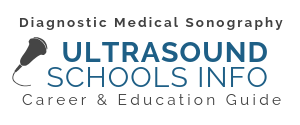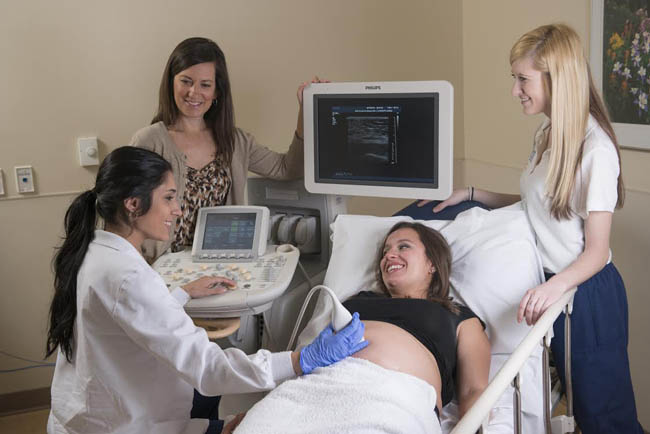As technology continues to evolve and permeate the field of healthcare, health science educators are utilizing advanced simulation training to prepare students for the challenges of the clinical environment. Medical facilities are also turning to simulation tools to help health professionals improve processes in the workplace.
Sonography instructors have seen tremendous value for their students when incorporating simulation exercises into their course work. Tara Dianna, Program Chair of Diagnostic Medical Sonography at Pennsylvania College of Health Sciences, recently took some time to discuss a few of the primary benefits their program has enjoyed as a result of simulation training.
How Sonography Educators Are Using Simulation Technology
Dianna’s team of instructors use multiple ultrasound phantoms in their lab, so students can practice proper technique and learn how to address real life challenges in a controlled scenario. These ultrasound phantoms are test objects—often made to look like a part of the human body—that contain tissue-mimicking material to simulate certain acoustic and physical properties of human tissue.
“There are multiple exams that we cannot practice in the lab,” explains Dianna, “simulation training helps the student prepare for these exams before entering the clinical area.” For example, individuals training for a career as an ultrasound technician can now learn transvaginal and scrotal study procedures using simulation exercises, decreasing the student’s anxiety before scanning a patient.
Benefits of Simulation Training
For sonography students, ultrasound phantoms have enhanced the learning experience, making them feel more confident when scanning patients in the clinical environment. “This not only helps the student, but the patient is more comfortable being scanned by a student when he or she displays confidence in performing the procedure,” stated Dianna. Instructors employing simulation exercises have witnessed positive outcomes among other disciplines as well, such as nursing.
In August 2014, the National Council of State Boards of Nursing (NCSBN) released the findings of its award-winning research study on replacing clinical hours with simulation in pre-licensure nursing education. The study concluded that “substituting high quality simulation experiences for up to half of traditional clinical hours produces comparable end-of- program educational outcomes to those students whose experiences are mostly just traditional clinical hours and produces new graduates that are ready for clinical practice.”
Advantages Within the Workplace
The benefits of simulation learning in healthcare extend far beyond just one discipline. Medical professionals who have been in the workforce for many years are using simulation to get acquainted with new technologies and procedures, with positive outcomes.
One of the greatest benefits of simulation training within the workplace is its ability to teach healthcare workers to make better and quicker decisions when in real-life trauma situations.
Simulation can also be used to identify and solve a wealth of workplace issues, including employee nonproductive time, workflow inefficiencies, and lagging transitions between teams. Properly designed simulation can help address these problems and improve facility processes.
Medical professionals and healthcare students, especially those in diagnostic medical sonography programs, should expect to participate in simulation exercises much more regularly as this technology continues to advance.
About Pennsylvania College of Health Sciences

Tara Dianna, Program Chair of DMS at Pennsylvania College of Health Sciences
A dynamic and rigorously academic institution, Pennsylvania College of Health Sciences is a private, accredited, four-year college offering certificate and associate degree programs in diagnostic medical sonography, along with many other healthcare degree programs.
PA College was one of ten sites to participate in the NCSBN landmark study on simulation learning from 2011-2013.
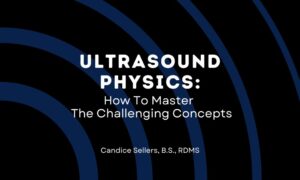
Candice Sellers, B.S., RDMS – Contributor Students attending ultrasound school consistently report that ultrasound physics is one of the most difficult courses in their program. It’s a required course and one that is important to master. Below you will find study tips and tools available to students to help them focus and hone in on…
How I Mastered Ultrasound Physics
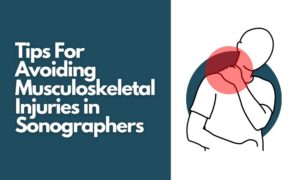
By Adrienne Hardy, RDMS (Ab, Ob/Gyn) – Contributor According to the SDMS, 90% of sonographers will sustain a work related musculoskeletal disorder; 20% will have a career ended because of the injury. With numbers this high it seems like it’s an inescapable truth that you must scan in pain or get injured at some point…
Most Common Injuries in Sonographers

By Adrienne Hardy, RDMS (Ab, Ob/Gyn) – Contributor As I sat in my entrance interview for sonography school the professors spattered me with questions: “Do you have enough savings? What is your home like? How do you manage your time? Do you have someone who cares about your success and will support you in hard…
Surviving and Thriving in Sonography School

We recently had the pleasure of speaking with Carlos Reveles, a high risk Ob/Gyn sonographer. In this interview, Carlos shares with us what led to him being recently recognized as a standout sonographer by his employer, and what it’s like being a male in a traditionally female field. Welcome Carlos! Hello my Name is Carlos…
Explore Carlos’s Sonography Journey

Adrienne Hardy, RDMS (Ab, Ob/Gyn) – Contributor I clicked submit on the SPI physics exam and ran out the the room. The test proctor handed me a piece of paper with a huge scared looking picture of myself taken before the exam, my ARDMS number and the results of my SPI examination. My hand shook as…
Passing the Sonography Principles and Instrumentation Exam

Candice Sellers, B.S., RDMS – Contributor The Ultrasound School Experience Ultrasound school is a very exciting and rewarding experience. The excitement of finally reaching your goal of getting accepted into an accredited ultrasound program is certainly a tremendous milestone! However, there will be moments of frustration and stress that will occur during your journey in…
How I Managed Stress While in My Sonography Program
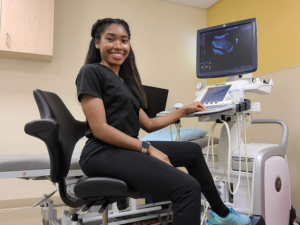
DruAusten Fields, RDMS (AB, OB/GYN), RVT – Contributor The Skilled Sonographer, DruAusten Fields, RDMS (AB, OB/GYN), RVT looks back on the development of her SPI test prep mini-course, and her work to help others pass their SPI exam. When I look back on where I started versus where I am, I can confidently say I have…
Tap into Dru’s Diagnostic Imaging Expertise

Adrienne Hardy, RDMS (Ab, Ob/Gyn) – Contributor What to expect as you transition from DMS student to the medical imaging workplace. Congratulations! You ran the marathon of Sonography school and now have gotten a job! What a relief, right? All the pent up anxiety and pressure of ultrasound school feels let off like a pressure valve…
Surviving the Transition: From Student to Sonographer Pro!
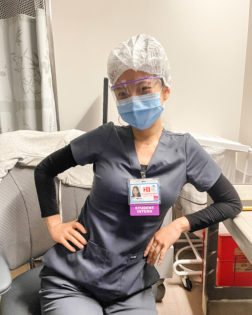
Lynn Nguyen – Sonography Student & Contributor Join Lynn on her journey as she pursues a 2nd career as a sonographer. Why Sonography? How Did I Get Here? I have never given sonography a thought much less loving the thought that I am going to be a sonographer one day. In high school I knew…
Why I Chose Diagnostic Medical Sonography

DruAusten Fields, RDMS (AB, OB/GYN), RVT – Contributor The Skilled Sonographer, DruAusten Fields, RDMS (AB, OB/GYN), RVT shares her sonography story! From Indecision to Decision Deciding on a lifelong career can be stressful, especially at a young age. During high school was when I began toying with the idea of pursuing a career in the…
Systems for Success in Sonography

Sam Callis, contributor at USI, is an author and sonographer with experience in multi-specialty clinical practice, higher education, and the medical device industry. She is the author of Diagnostic Medical Sonography – The Definitive Guide to Planning Your Career. We were first introduced to Samantha back in 2019 with this terrific interview in which she…
From Art to Science: A Sonographer’s Unique Career Path
The demand for healthcare professionals, including those specializing in medical imaging, continues to rise. As the aging baby boomer population grows, there is an increasing need for diagnostic imaging procedures, alongside a demand for new providers to fill positions vacated by retiring workers. This ongoing expansion in medical imaging careers presents excellent opportunities for individuals…
Updated for 2025

